Though the Nintendo Switch ushered in a new era of handheld gaming with its hybrid design, Valve’s Steam Deck set the standard for portable PC gaming. Outside of its fantastic software and general design, the AMD Zen CPU and RDNA GPU gave it the power to run many PC games on the go. Other devices like the Asus ROG Ally and Lenovo Legion Go would eventually use that same AMD combo while making Windows the standard operating system on the device. MSI’s entrance into the Windows gaming handheld market comes via the MSI Claw, a “one foot in, one foot out” approach that feels admirable, yet doesn’t match rivals in the space where it counts.
Featuring a 7-inch 1080p touchscreen display, the MSI Claw is a Windows 11 gaming handheld, powered by an Intel Core Ultra processor, Intel Arc Graphics, 16GB of RAM and 1TB of SSD storage. On paper, these specs match other Windows PC gaming handhelds currently available. But during a week and a half of real-time testing, we found the MSI Claw lacking in key areas despite some standout attributes.
The MSI Claw offers respectable features for a handheld gaming PC, from its fantastic audio capabilities to its comfortable design. However, it has a hard time competing with the Steam Deck and Asus ROG Ally in terms of price, performance power and overall software polish.
What I liked about it
A wonderful 7-inch touch screen
Playing games and watching video content on the MSI Claw looks visually great thanks to the 7-inch 1080p IPS touchscreen display. The screen has the right amount of brightness, color accuracy and deep blacks. Games with lower performance requirements like Myst (2023) and Tales of Kenzera: Zau ran smoothly on the smaller screen with clear visual information. The same was true for high-fidelity triple-A games such as Cyberpunk 2077, Alan Wake 2 and Senua’s Saga: Hellblade II.
The display features a 120Hz refresh rate, which is ideal for super-smooth competitive gaming — but is something you may not be able to take full advantage of due to the MSI Claw’s overall performance (which we will touch on later). Games that reached close to 120 fps frame rates like Fortnite, Call of Duty: Warzone and Counter-Strike 2 delivered smooth motion without any screen tearing. Playing games like Myst worked better with the touchscreen sometimes than the controller itself.
YouTube and Netflix videos looked wonderful as well, which makes the MSI Claw something to consider for anyone with high frequent flyer miles. When hooked up to a keyboard and mouse, the MSI Claw works well as a mini PC for general computing tasks like Google Chrome and Slack. It was easy to see various font types and read words without issue. Between gaming, watching video content, reading the occasional news story and looking around social media, I didn’t experience any eye strain.
Best-in-class audio
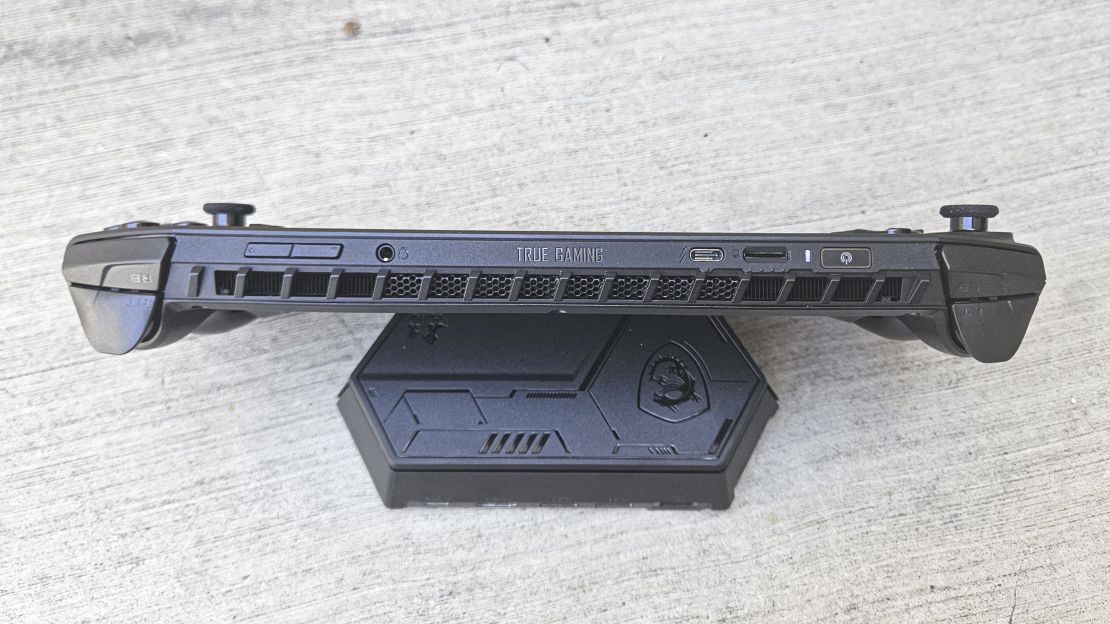
Most gaming handhelds’ audio capabilities are just OK, and you’re usually better off connecting a gaming headset or a pair of headphones for better immersion. Though the MSI Claw features both Bluetooth and a 3.5mm headphone jack for your external audio needs, the built-in speakers are the best we’ve witnessed in a Windows gaming handheld. The two 2W speakers really put in work on all levels.
Fantastic volume levels, clarity and surround sound lend to audio quality that’s yet to be matched by other Windows gaming handhelds. This was noticeable when playing Senua’s Saga: Hellblade II. As many gamers who have played the Microsoft exclusive know, audio plays a huge part in the game’s presentation, as the lead protagonist hears voices in her head. The game even asks users to play with headphones on just to drive that point home.
Interestingly enough, the speakers can pull off directional audio on the MSI Claw, which leads to some impressive results. I could audibly hear which direction voices were coming from. Other games that sounded nice on the MSI Claw included Forza Motorsport (2023) and Armored Core 6. Much of the impressive sound quality is due to support for Nahimic, SteelSeries’ audio software that enhances audio performance using high-definition sound technology. The speakers also sound fantastic when listening to music or watching video content thanks to Hi-Res audio certification.
Interesting feature set
In an age when cloud streaming services like Nvidia GeForce Now, Xbox Game Pass and Amazon Luna are growing in popularity, the MSI Claw offering Wi-Fi 7 is a wise move that makes it ideal for that style of gaming. At home on a 5GHz wireless router, we were able to stream games like Zuma and Senua’s Saga: Hellblade II. without much issue. However, games that require more strict input timing like Forza Motorsport and Elden Ring were no-gos.
Much of the user experience with the MSI Claw lives in the MSI Center M. This software serves as a Windows overlay similar to SteamOS on the Steam Deck. Users can open games from launchers like Steam, Epic, EA and Blizzard once they’re logged in. There are various performance modes for maxing the capabilities of the handheld or lowering them to conserve battery life. There’s even an AI mode that attempts to learn user behavior to adjust settings like RGB lighting, fan speed or battery usage automatically.
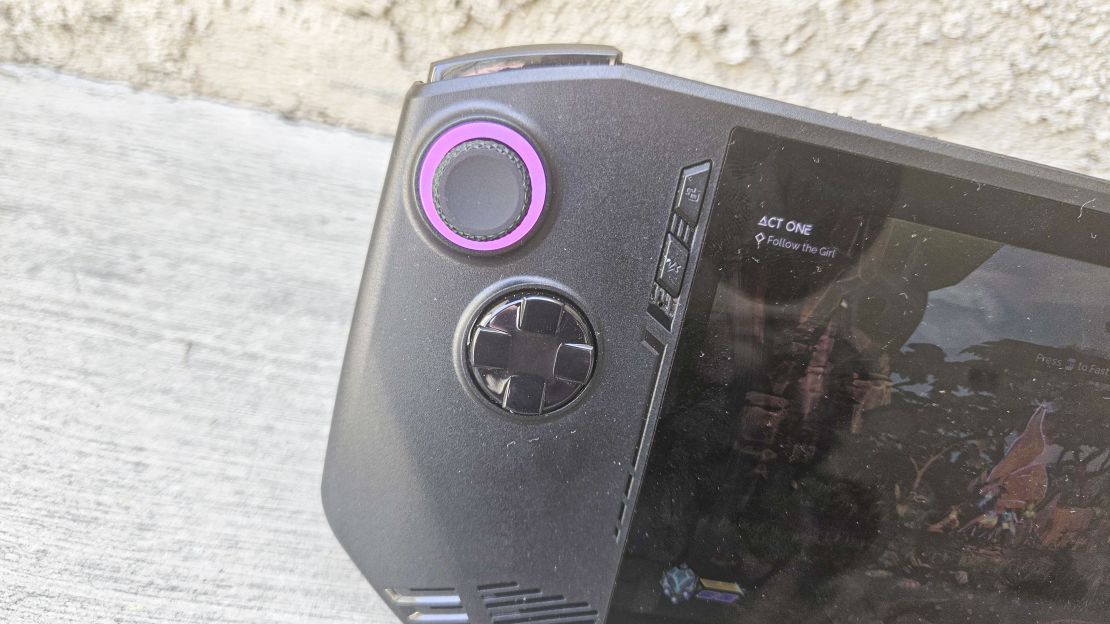
Outside of that, the handheld features a standard controller layout, including face buttons, analog sticks, D-pads, bumpers and triggers. There are two buttons on the back panels that can be programmable for many things depending on the game. For immersion, the MSI Claw also has haptic feedback rumble which can be enabled or disabled as well. Though the bumpers felt a bit squishy when playing games, the overall design of the handheld is comfortable for long or short periods.
What I didn’t like about it
Gaming performance can’t match competition
Intel has a strong history of producing powerful CPUs for both desktop and mobile platforms. However, its recent entry into the GPU market has been less successful so far, with its Arc graphics cards launching in late 2022 to a lukewarm reception. While the budget-friendly price and ample VRAM were praised, the Arc series lagged behind competitors Nvidia and AMD in raw gaming performance. Another major issue at launch was the Arc’s compatibility problems with many older games and some newer titles, further hampering its appeal to gamers.
The MSI Claw comes in two performance flavors, the Intel Core Ultra 5 processor 135H A1M-021SG and the Intel Core Ultra 7 processor 155H Claw A1M-020SG. We received the most powerful Ultra 7, which works fine for games that lean more on CPU power. However, triple-A games that rely more on GPU power are going to struggle significantly on the MSI Claw. That doesn’t even count the number of crashes for incompatible games.
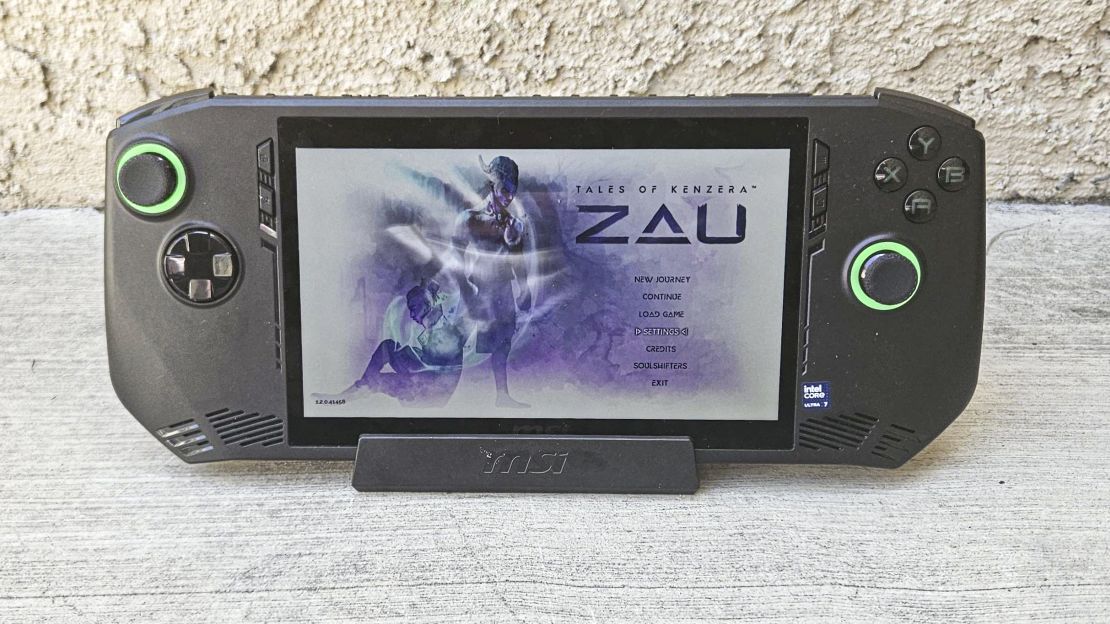
During our time with the MSI Claw, we tried a variety of games pushing various performance levels. Games like Senua’s Saga: Hellblade II, Alan Wake 2 and Forza Motorsport could barely hold 30 fps (which we consider the bare minimum for playability) on low-to-mid settings at 1080p. Bumping the native resolution down to 720p helped games stay within the 30 fps range. Frame rate increases helped for games that supported Intel’s XeSS upscaling technology. However, it doesn’t perform or look as good as Nvidia’s DLSS and AMD’s FSR. Playing Armored Core VI: Fires of Rubicon and Tales of Kenzera: Zau on mid-range settings at 1080p allowed for frame rates in the low 60s. Esports titles with less demanding graphical requirements like Fortnite and Counter-Strike: Global Offensive, could reach 120fps at low to mid settings.?Trying to play vintage games like Split/Second led to instant crashing.
For a handheld that has a full HD display and a silky 120Hz refresh rate, most modern games won’t be able to take much advantage of the screen. Compared to gaming handhelds like the Steam Deck and Asus ROG Ally, the MSI Claw just can’t compete.
It’s expensive
The MSI Claw comes in two configurations: the A1M-021SG at $949 and the A1M-020SG at $1,169. These prices are questionable given the performance of this Windows gaming handheld. For comparison, the top-tier Steam Deck OLED is priced at $649, and the highest-end ROG Ally model is $800. The high price just doesn’t make sense, as the MSI Claw doesn’t even come with any added accessories like a carrying case. Users who want that alongside some other extras are going to shell out $59.
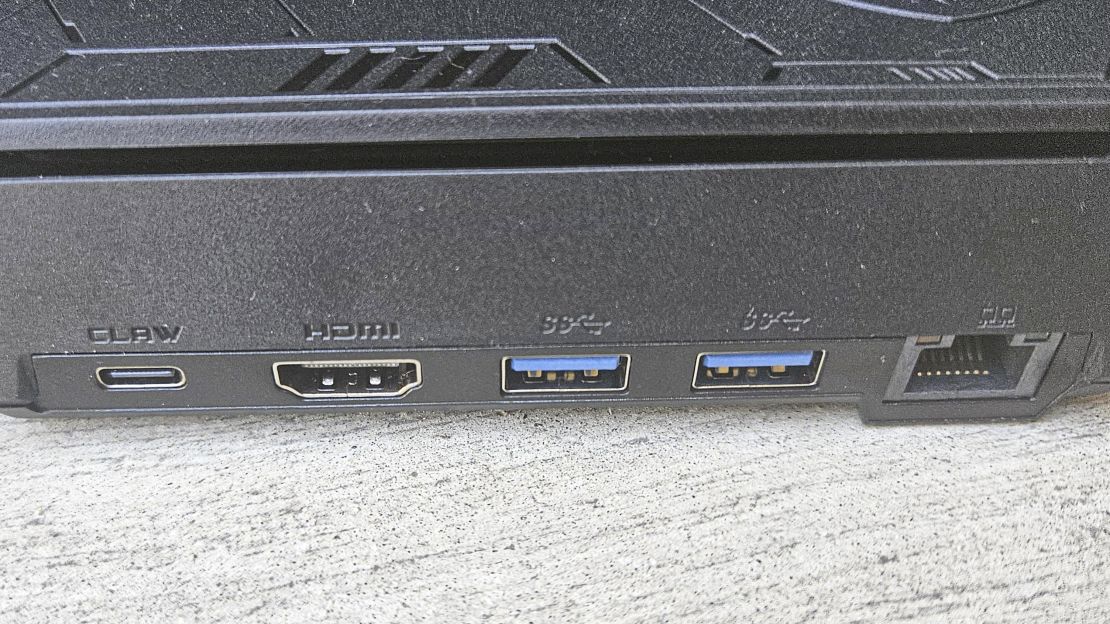
Our review configuration also came with a $80 docking station, which worked great with a Bluetooth keyboard and mouse when connected to a monitor. Just understand that if the MSI Claw can barely handle 1080p, it’s not going to work well on monitors above that resolution. However, it’s a cool add-on for those who want to play and work on the gaming handheld, as the docking station connects via USB-C and comes with an HDMI port, two USB-A ports, three USB-C ports and an Ethernet jack for plenty of displays and accessories.
Based on our time with the MSI Claw, it’s hard to understand why both configurations are priced the way they are. If potential buyers are looking to get the best Windows gaming handheld for their buck, it’s best to look into the Asus ROG Ally or Lenovo Legion Go.
MSI software issues and other glitches
MSI Center M offers some interesting features but is plagued by glitches, crashes and bugs that lead to force quits. Compatibility issues with Windows 11 are evident, notably the lack of an onscreen keyboard, which can only be activated through the MSI Center M app. This makes logging into the launcher cumbersome, as users must press the MSI Center M button and toggle the keyboard for both username and password. Games requiring a keyboard can also be frustrating.
These issues are absent in the Steam Deck and Asus ROG Ally. Additionally, MSI Center M struggles to switch between desktop and gamepad modes, and performance suffers when using Steam. Overall, the MSI Claw faces significant compatibility and performance problems with Windows. When I’d put it to sleep and put it in a bag, the console would switch on and become incredibly hot over time with the fans on max. That could be potentially dangerous for the health of the device over time. Hopefully, the lifespan of the Windows gaming handheld will feature some more updates and patches, because even months after release, this device still has a long way to go.
Bottom line
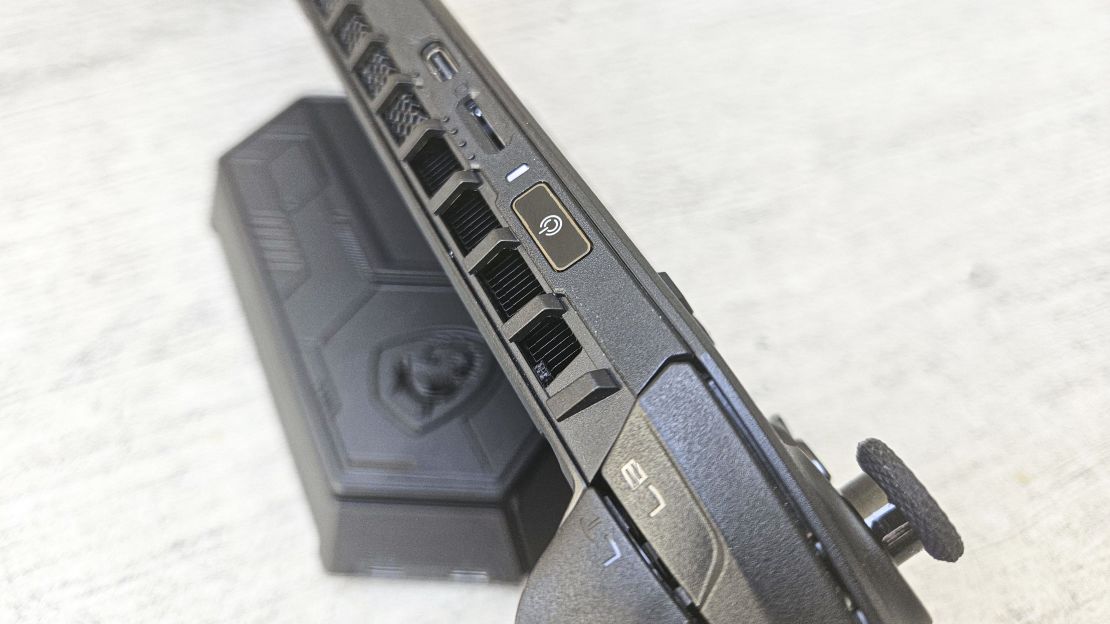
Despite some admirable features, the MSI Claw falls short in key areas, making it a less compelling choice in the competitive landscape of Windows gaming handhelds. It boasts a visually impressive 7-inch screen and enhances gameplay for less demanding titles. The audio quality stands out, offering an immersive experience that rivals struggle to match. Additionally, the inclusion of Wi-Fi 7 compatibility and an innovative MSI Center M overlay aim to elevate user experience.
However, the MSI Claw’s gaming performance is hampered by its Intel Arc Graphics GPU, which struggles to deliver smooth gameplay for triple-A titles. This is further exacerbated by frequent crashes and compatibility issues with many games, making it less reliable compared to competitors like the Steam Deck and Asus ROG Ally. The device’s pricing, at $949 and $1,169 for different configurations, feels unjustified given its performance limitations and lack of included accessories.
Moreover, the MSI Center M software, despite its potential, is marred by glitches and crashes, complicating the user experience. Compatibility issues with Windows 11, including the cumbersome activation of the onscreen keyboard, detract from its usability. The MSI Claw’s inability to seamlessly switch between desktop and gamepad modes further underscores its shortcomings.
In summary, while the MSI Claw offers some standout features, it ultimately falls short in delivering a reliable and competitively priced gaming handheld experience. Potential buyers will find better value in other options currently available on the market.
MSI Claw alternatives to check out instead
Our favorite PC gaming handheld, the Steam Deck OLED delivers solid performance, a gorgeous OLED display and a streamlined interface for easily playing your favorite Steam titles.
If you prefer a gaming handheld with the flexibility of full Windows 11, the ROG Ally X and its excellent controls and screen is a great option.



















